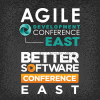Agile Development Conference & Better Software Conference East 2012

PRESENTATIONS
|
Massive Continuous Integration and Light-speed Iterations
Continuous integration (CI) has become a buzzword, with most engineering organizations claiming they've adopted the practice. However, the sad truth is that unreliable tests, long feedback loops, and poor configuration management block their efforts and minimize CI's potential benefits. Jesse Dowdle shares how AtTask radically redesigned its engineering pipeline and, through massive CI scaling, drove three days of testing to just minutes. Learn the pros and cons of different CI systems and how to integrate them with the cloud. |
|
|
Mock Objects: From Concept to Code
Mock objects are simulated objects that mimic the behavior of real objects in controlled ways. Because many code modules interact with external entities-things like databases, networks, file systems, third-party frameworks, and even the clock-these entities often cause us big-time trouble during unit testing. These entities can slow down our unit tests, produce unpredictable results, and have dangerous side effects. The best unit tests are decoupled from these external entities. |

Rob Myers, Agile Institute |
|
Orthogonal Defect Classification: An Agile Test/QA Primer
Can defect root cause analysis be made agile? Can we transform a multi-hour task from the classical world of software engineering into one that takes minutes and yields greater insights? Learn how Orthogonal Defect Classification (ODC) extracts semantics from defects and turns them into insights on the development process using analytics. After a quick overview of ODC, Ram Chillarege presents a case study to illustrate the method using real-world data on an agile project. |
|
|
Pay Now or Pay More Every Day: Reduce Technical Debt Now!
Is your team missing delivery dates? Is your velocity inconsistent from sprint to sprint? Are customers complaining about defects or the time it takes to add new features? These are signs that you are mired in technical debt-a metaphor that describes the long-term costs of doing something in a quick and dirty way and not going back to clean up the mess. Fadi Stephan shares a technical debt management approach to help you make prudent decisions on how much effort to invest in reducing technical debt. |

Fadi Stephan, Excella Consulting |
|
Protection Poker: An Agile Security Game
Each time a new feature is added to a product, developers need to consider the security risk implications, find ways to securely implement the function, and develop tests to confirm that the risk is gone or significantly lowered. Laurie Williams shares a Wideband Delphi practice called Protection Poker she's employed as a collaborative, interactive, and informal agile structure for "misuse case" development and threat modeling. |
|
|
Ready and Fit: Adopting Agile in Highly Regulated Environments
If you live and work in a highly regulated environment (HRE)-medical devices, DoD and its contractors, nuclear energy, or other life-critical systems-this session is for you. For the past three years, the SEI has been researching agile and lean adoptions in the US Department of Defense. Suzanne Miller presents the organizational and cultural factors they identified as most important for development organizations to demonstrate when embarking on an agile adoption program. |

Suzanne Miller, Software Engineering Institute |
|
Red Beads: A New Tool for Managing Software Projects
Warning! Warning! Managing software projects may be accompanied by continued bouts of nausea-brought on by unmet expectations, process churn, late deliveries, and worse. In their attempt to conquer these problems, many managers stiffen their resolve, create stricter schedules, and install rigid processes to guide development from inception to production. Howard Deiner demonstrates that better results come from fundamental changes in the way managers and the organization approach problems. Drawing on W. |

Howard Deiner, Deinersoft, Inc. |
|
Reduce Release Cycle Time: Nine Months to a Week - Nice!
Picture this scene from three years ago: Employing the corporately mandated processes, a software engineering team is delivering system updates about once every nine months. When their senior user suddenly demands the next delivery in twenty-two weeks-half the current cycle duration-the team realize that they must quickly change development practices. Mathew Bissett describes how Her Majesty's Government did precisely that-and much, much more. |
|
|
Right-sized Architecture: Integrity for Emerging Designs
In agile projects, design ideally "emerges" over the course of development. However, if teams primarily focus on independent user stories, they risk losing sight of the product's vision and the integrity of well-thought-out architecture. Ken Kubo shares techniques he's used to improve the chances that a product's design will emerge into a cohesive and coherent architecture that serves its customers for many years. |

Ken Kubo, Northrop Grumman Corporation |
|
Scaling Agile at Dell: Real-life Problems - and Solutions
The transition from waterfall-based software development to an agile, iterative model carries with it well-known challenges and problems-entrenched cultures, skill gaps, and organizational change management. For a large, globally distributed software development organization, an entirely different set of practical challenges comes with scaling agile practices. |
|


